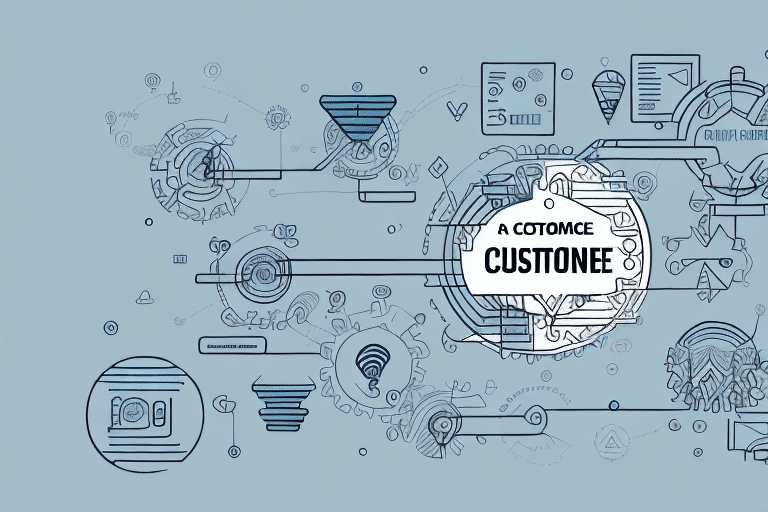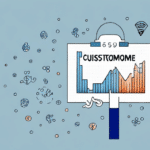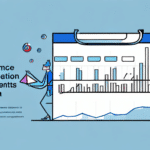What Is Customer Retention? A Comprehensive Definition and Explanation
Customer retention refers to a business’s ability to maintain its customer base over a period of time. It is a crucial element for sustained business growth, as retaining existing customers is significantly more cost-effective than acquiring new ones. High customer retention rates are indicative of customer satisfaction and loyalty, which directly contribute to a company’s long-term profitability and sustainability. Understanding and improving customer retention involves analyzing customer behaviors, implementing effective strategies, and continuously enhancing the overall customer experience.
Why Customer Retention Matters for Your Business
Enhancing Customer Lifetime Value (CLV)
Customer retention is pivotal in increasing the Customer Lifetime Value (CLV), which represents the total revenue a business can expect from a single customer account throughout the business relationship. A higher CLV indicates that customers are making repeat purchases and remain engaged with the brand, leading to increased revenue and profitability.
Cost-Effectiveness
Acquiring new customers typically costs five times more than retaining existing ones. By focusing on retention, businesses can significantly reduce marketing and acquisition costs. Additionally, loyal customers often become brand advocates, referring new customers without additional marketing expenses.
Building Brand Loyalty and Reputation
Consistently retaining customers helps in building a strong brand reputation and fosters customer loyalty. Loyal customers are more likely to provide positive reviews, offer valuable feedback, and contribute to a stable revenue stream, which is essential for long-term business success.
Understanding Customer Retention vs. Acquisition
Balancing Both Strategies
While customer retention focuses on maintaining existing customers, customer acquisition aims to attract new ones. Both strategies are essential; however, retention tends to be more cost-effective and can lead to higher profitability. A balanced approach ensures that a business not only sustains its current customer base but also continues to grow.
Complementary Approaches
Retention and acquisition should complement each other. Effective retention strategies can enhance customer satisfaction, making acquisition efforts more fruitful as satisfied customers are more likely to refer others. Conversely, successful acquisition can lead to a larger customer base that retention strategies can nurture.
The Importance of Measuring Customer Retention
Key Metrics to Track
- Customer Retention Rate (CRR): The percentage of customers retained over a specific period.
- Churn Rate: The rate at which customers stop doing business with a company.
- Repeat Customer Rate: The proportion of customers who make more than one purchase.
- Net Promoter Score (NPS): A measure of customer satisfaction and loyalty based on the likelihood of customers recommending the business to others.
- Customer Lifetime Value (CLV): The total revenue a business can expect from a single customer account.
Tracking these metrics provides valuable insights into customer behaviors and the effectiveness of retention strategies. It enables businesses to identify trends, address issues proactively, and make data-driven decisions to enhance the customer experience.
Identifying Areas for Improvement
Regularly measuring retention metrics helps businesses pinpoint specific areas that need improvement. For instance, a high churn rate may indicate issues with customer satisfaction, product quality, or competitive pricing. By addressing these issues, businesses can improve their retention rates and overall customer satisfaction.
Strategies for Improving Customer Retention in Your Business
Implementing Loyalty Programs and Rewards
Loyalty programs incentivize repeat business by offering rewards, discounts, or exclusive access to products and services. According to a Harvard Business Review study, customers who feel rewarded for their loyalty are more likely to continue purchasing and recommend the brand to others.
Providing Exceptional Customer Service
Exceptional customer service is a cornerstone of customer retention. Prompt, effective, and personalized support can significantly enhance customer satisfaction and loyalty. Training staff to handle inquiries and issues efficiently is essential for maintaining a positive customer experience.
Engaging with Customers Through Personalization
Personalized communication and offers based on customer preferences and behaviors can increase engagement and loyalty. Utilizing data analytics to understand customer needs allows businesses to tailor their interactions, making customers feel valued and understood.
Addressing Customer Concerns and Feedback
Actively seeking and addressing customer feedback demonstrates a commitment to improving the customer experience. Implementing feedback mechanisms such as surveys, reviews, and direct communication channels helps businesses identify and resolve issues promptly.
Creating a Seamless Customer Experience
A seamless and user-friendly experience across all touchpoints, including online platforms and physical stores, ensures that customers have positive interactions with the brand. Consistency in service quality and ease of navigation contribute to higher retention rates.
Common Customer Retention Mistakes to Avoid
- Ignoring Customer Feedback: Failing to listen to and act on customer feedback can lead to dissatisfaction and increased churn.
- Poor Customer Service: Inadequate or unresponsive customer service can frustrate customers and drive them away.
- Lack of Personalization: Generic interactions that do not consider individual customer preferences can make customers feel undervalued.
- Underinvesting in Retention Strategies: Neglecting to allocate sufficient resources to retention efforts can hinder the effectiveness of these strategies.
- Inconsistency Across Channels: Providing inconsistent experiences across different customer touchpoints can confuse and frustrate customers.
Avoiding these common mistakes is essential for fostering strong customer relationships and maintaining high retention rates. Businesses should prioritize listening to customers, providing excellent service, personalizing interactions, investing in retention initiatives, and ensuring consistency across all channels.
Tools and Technologies for Boosting Your Customer Retention Efforts
- Customer Relationship Management (CRM) Software: Tools like Salesforce and HubSpot CRM help businesses manage customer interactions, track behaviors, and personalize communication.
- Data Analytics Tools: Platforms such as Tableau and Google Analytics provide insights into customer behaviors and trends, enabling data-driven decision-making.
- Personalization Platforms: Solutions like Optimizely and Segment allow businesses to create tailored experiences based on individual customer data.
- Social Listening and Monitoring Tools: Tools such as Hootsuite and Brandwatch help monitor customer sentiments and feedback on social media platforms.
Leveraging these tools and technologies can enhance retention efforts by providing valuable insights, automating personalized communications, and ensuring a consistent and engaging customer experience.
The Future of Customer Retention: Trends and Predictions
- Increased Use of Artificial Intelligence and Automation: AI-driven tools are enhancing personalization and automating customer interactions, making retention efforts more efficient and effective.
- Greater Emphasis on Customer Experience: Businesses are prioritizing seamless and enjoyable customer experiences across all touchpoints to foster loyalty.
- Rise of Social Media and New Communication Channels: The expansion of social media and emerging communication platforms provides new avenues for engaging with customers and building relationships.
- Enhanced Personalization: Advanced data analytics and machine learning are enabling more precise and meaningful personalization strategies.
- Competitive Differentiation Through Retention Strategies: As competition intensifies, businesses are differentiating themselves by implementing innovative and effective retention strategies.
Staying abreast of these trends and adapting strategies accordingly will be crucial for businesses aiming to maintain and enhance their customer retention rates in the evolving market landscape.
Case Studies: Successful Examples of Customer Retention in Action
- Amazon Prime: Amazon’s Prime membership program offers benefits like free shipping, exclusive deals, and streaming services, enhancing customer loyalty and retention.
- Nike Plus Membership: Nike’s loyalty program provides personalized offers, early access to products, and exclusive events, fostering a strong community and repeat business.
- Starbucks Rewards: Starbucks’ rewards program incentivizes repeat purchases through points accumulation, personalized offers, and mobile ordering conveniences.
These case studies illustrate how well-designed retention strategies can lead to significant customer loyalty and sustained business growth. By understanding and implementing similar approaches, businesses can achieve remarkable retention outcomes.
Creating a Customer Retention Plan: Tips and Best Practices
- Define Your Target Audience: Understanding who your customers are and what they need is fundamental to creating effective retention strategies.
- Understand Customer Behaviors and Motivations: Analyzing customer data to comprehend their behaviors, preferences, and motivations helps tailor retention efforts.
- Set Clear Retention Goals and Metrics: Establishing specific, measurable goals ensures that retention strategies are aligned with business objectives and can be effectively tracked.
- Create Retention Strategies Aligned with Business Goals: Developing strategies that support overall business objectives ensures coherence and effectiveness in retention efforts.
By following these best practices, businesses can develop comprehensive customer retention plans that drive long-term success and growth. Building strong relationships through excellent customer service, personalized experiences, and proactive engagement is essential for maintaining high retention rates.
How to Build Stronger Relationships with Your Customers
- Engage on Social Media and Other Platforms: Active engagement on social media fosters a sense of community and direct interaction with customers.
- Personalize Communication and Offers: Tailoring messages and offers based on individual customer data enhances relevance and satisfaction.
- Respond Quickly to Feedback and Concerns: Prompt and proactive responses to customer feedback demonstrate commitment to their satisfaction.
- Provide a Consistent Experience Across All Channels: Ensuring consistency in service and interactions across all customer touchpoints builds trust and reliability.
Building strong customer relationships involves exceeding expectations by offering exceptional service, personalized interactions, and reliable support. Consistently delivering high-quality experiences fosters loyalty and encourages customers to remain engaged with the brand.
Moreover, businesses should focus on exceeding customer expectations by providing unexpected perks, rewards, and high-quality products or services. This not only strengthens relationships but also enhances the overall reputation of the brand, leading to positive word-of-mouth referrals.
The Role of Personalization in Customer Retention
Personalization plays a critical role in enhancing the customer experience and driving retention. By tailoring communications, offers, and services to individual customer preferences and behaviors, businesses can create more meaningful and engaging interactions.
Benefits of Personalization
- Increased Loyalty: Personalized experiences make customers feel valued, fostering stronger loyalty to the brand.
- Higher Engagement: Customized offers and recommendations are more relevant, leading to higher engagement and conversion rates.
- Enhanced Customer Satisfaction: Addressing specific customer needs and preferences leads to greater satisfaction and positive perceptions of the brand.
Implementing high-quality personalization requires effective data collection and analysis to understand customer needs better. Utilizing tools and technologies that enable data-driven personalization can significantly enhance retention efforts.
Studies have shown that personalized marketing efforts can lead to higher open rates and click-through rates compared to generic communications. For instance, Second Measure reports that personalized emails can achieve up to a 29% higher open rate and a 41% higher click-through rate.
Conclusion
Customer retention is a vital component of business success, influencing profitability, sustainability, and growth. By prioritizing retention through effective strategies, measuring key metrics, avoiding common pitfalls, and leveraging modern tools and technologies, businesses can build and maintain a loyal customer base. Adapting to future trends and continuously enhancing the customer experience will ensure long-term success and a competitive edge in the market.






















